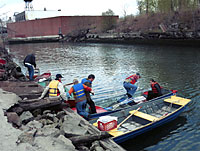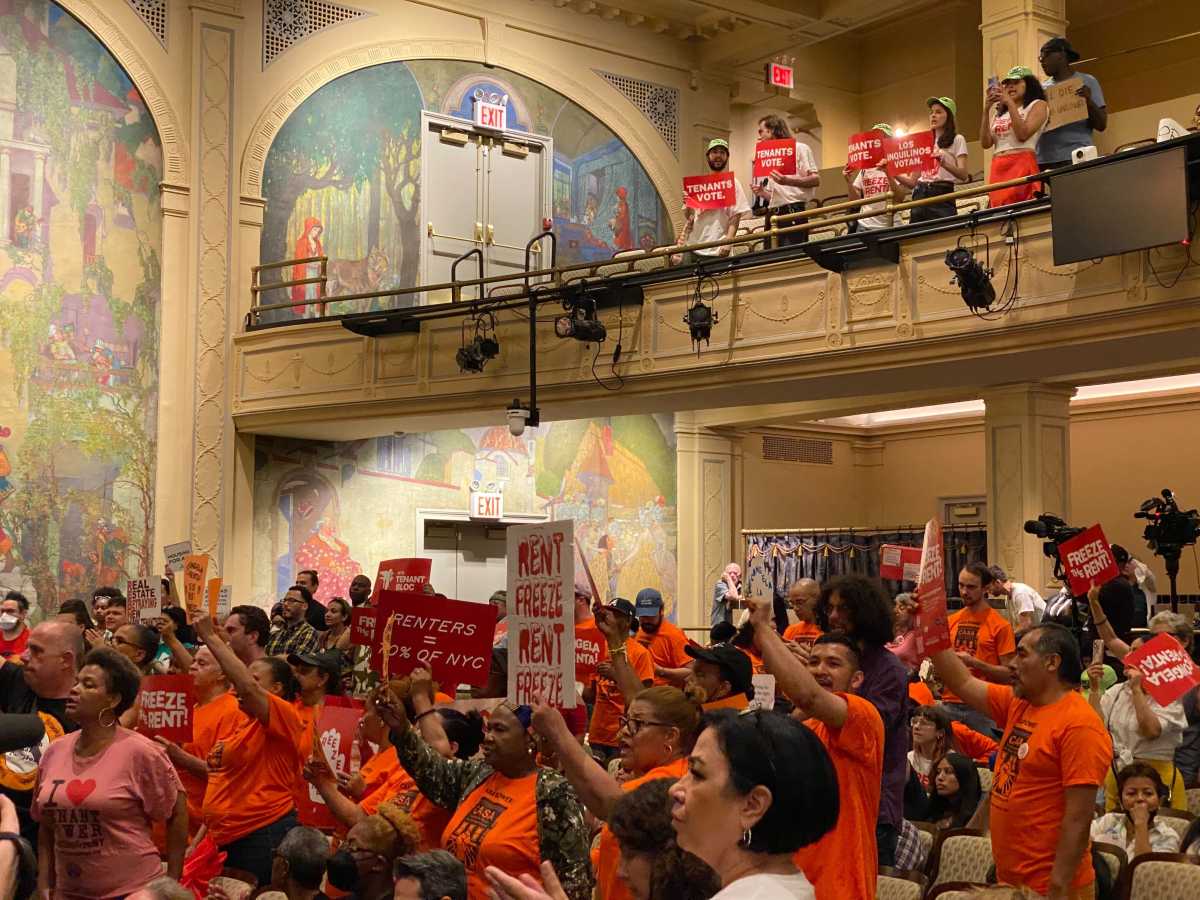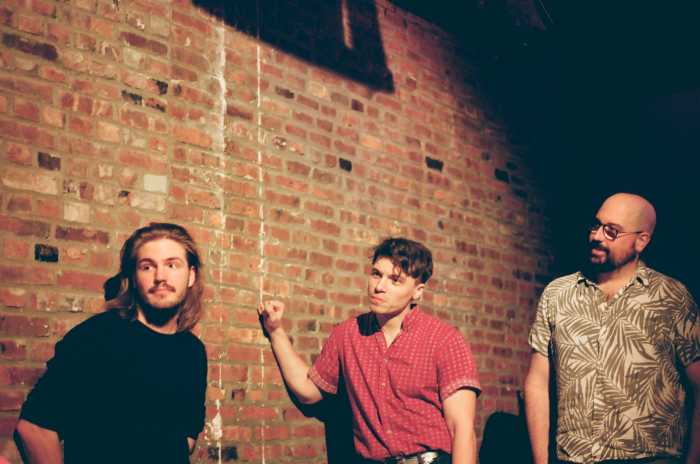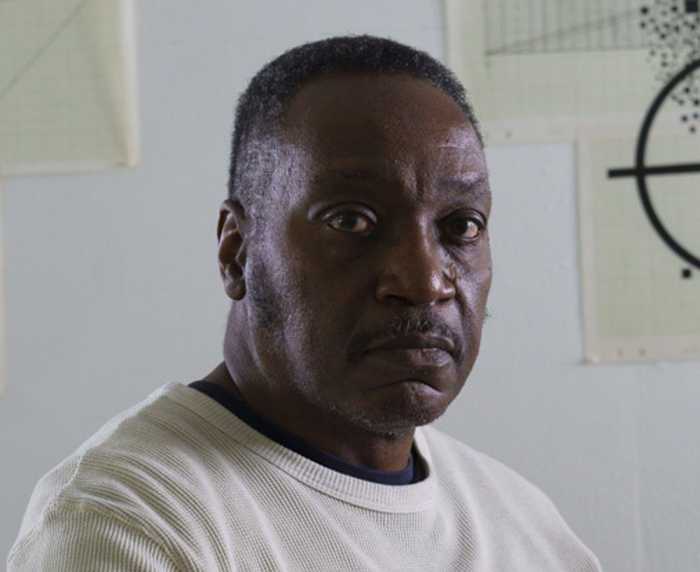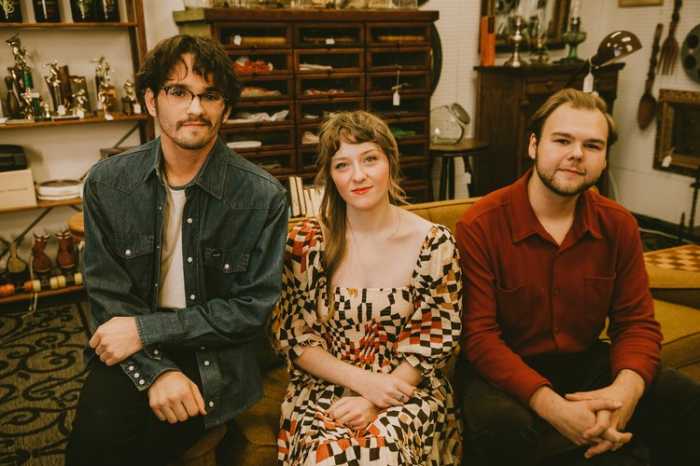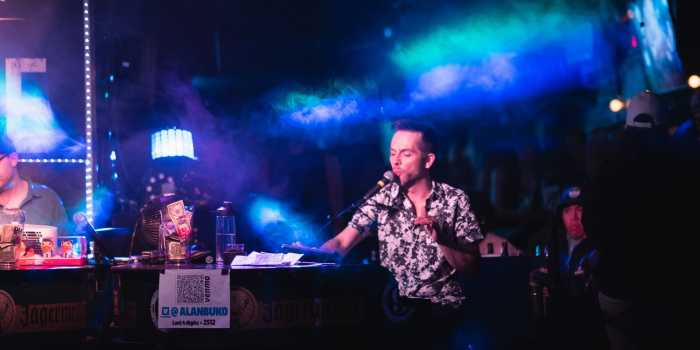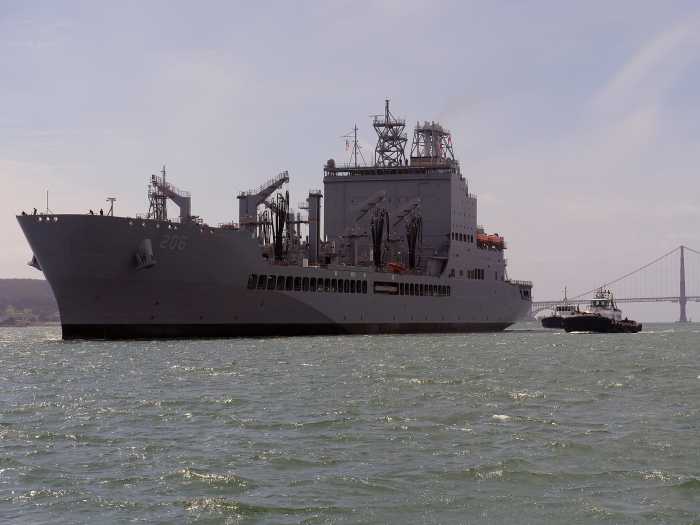Residents of the greater Gowanus neighborhood got their first look recently
at plans by the Gowanus Canal Community Development Corporation’s
plan to redesign the area.
The response from the community to the plans, which have been in the works
since 2003, was tantamount to a parent scolding a child: First, clean
up the mess; then we can play.
The March 29 meeting was held at PS 58 in Carroll Gardens.
With designs that included everything from adding streetlight fixtures
to an elaborate relocation of a cement plant to canal-side attractions,
attendees complained the presentation missed on one key point — the
canal itself.
William Donahoe, a land use consultant with Ehrenkrantz Eckstut &
Kuhn Architects, the firm hired to design the community plan, showed a
Power Point presentation to a room of an audience of about 150.
Suggested changes included turning a historic pumping station into an
environmental education center, employing traffic-calming devices, adding
traffic lights at Union Street, Carroll Street and Third Street near the
canal, constructing new housing or converting “underutilized industrial
buildings, which can be reused as lofts” to help “increase property
values and return taxes to the city,” and creating a series of small
green parks at the dead-end streets that abut the canal as gathering and
picnic places.
“When you look at this neighborhood, all over you see that vehicular
access is very limited already,” said Donohoe. “It’s made-to-order
for pedestrianization [sic].”
But some residents objected to encouraging more recreational activities
and residents to an area that has not yet outlived its reputation for
being an industrial wasteland. The canal was formerly known as “Lavender
Lake” for the purplish chemical-runoff sheen it displayed until about
six years ago, when a flushing tunnel was put into operation pumping fresher,
oxygenated water into the canal from New York Bay.
The canal, which is beloved by some as holding recreational and historic
preservation potential and bemoaned by others as a polluted dumping grounds
for local industry, has experienced a mini-renaissance since the flushing
tunnel began operating, even hosting a successful oyster farm and occasional
wayfaring seals.
And the emigration of artists to the area, along with the purchase by
mega-developer Shaya Boymelgreen of canal-side lots for a planned housing
complex are harbingers of what lies ahead.
John Muir, executive director of the Brooklyn Center for the Urban Environment,
thought the redevelopment was a perfect opportunity to affect environmental
change.
“Can the plan not encourage the speed-up of the old dirty industries
out of the Gowanus?” he asked, citing the concrete plants, which
he claimed pollute the water. “Hasn’t it been long enough that
we’ve had to inhale the smell of pollution created by the industries?”
Donohoe answered that the idea of redesign wasn’t to scare off industry
already there, just to shift it around a little. “It’s an important
industry to have. They should first be held to clean up; if they don’t
meet performance guidelines hey should be asked to leave.”
The crux of development north of Union Street, which was labeled “North
Gowanus” in the presentation, was the creation of new housing, particularly
in areas near underused parks or transportation.
Thomas Greene Park, at Union and Bond streets, is a 200-foot by 800-foot
park where, Donohoe said, new apartment buildings would probably be very
successful to “realize the value” of the neighborhood, which
is largely warehouses.
A canoer from the Gowanus Dredgers, however, said he was dissatisfied
with discussion about what he called the “800-pound whale in the
room.”
“What’s going on with the canal and the water?” he asked.
Donohoe answered, “I don’t think we’ve come adequately
to grips with it.” He added that the growing interest by developers
in the canal area was creating pressure on the city to act.
But Gowanus resident Marlene Donnolley, a member of Friends and Residents
of Greater Gowanus (FROGGS), said she thought the oversight agencies were
waiting for a signal from the community.
“I feel like the [city] Department of Environmental Protection, the
United States Army Corps of Engineers and even the community board [CB6]
are looking for direction [on what should happen next],” she said.
“Until we clear the water, I don’t think we should be talking
about adding new residential buildings.”


